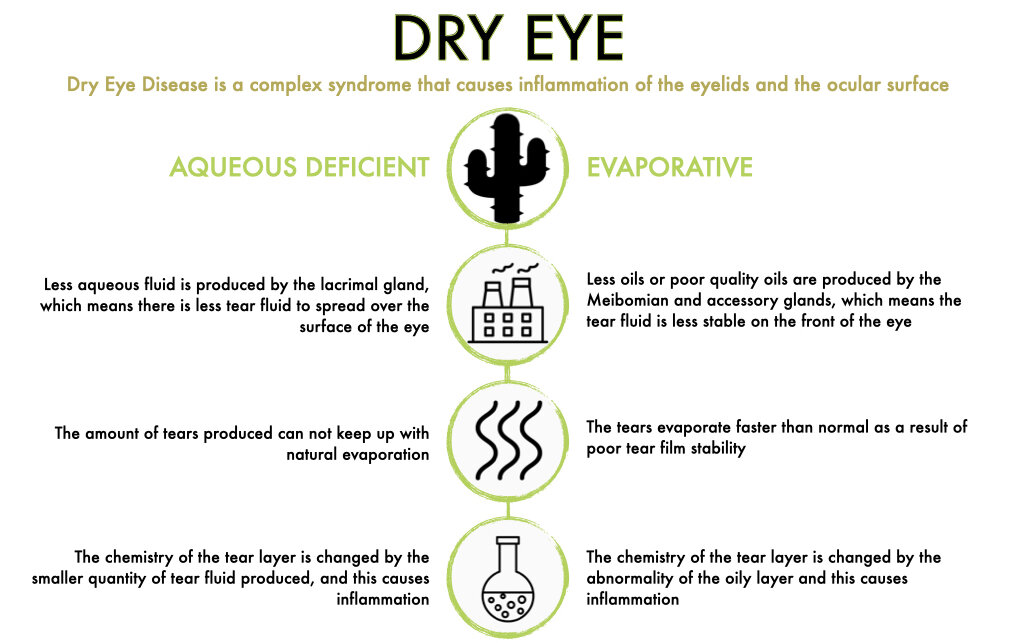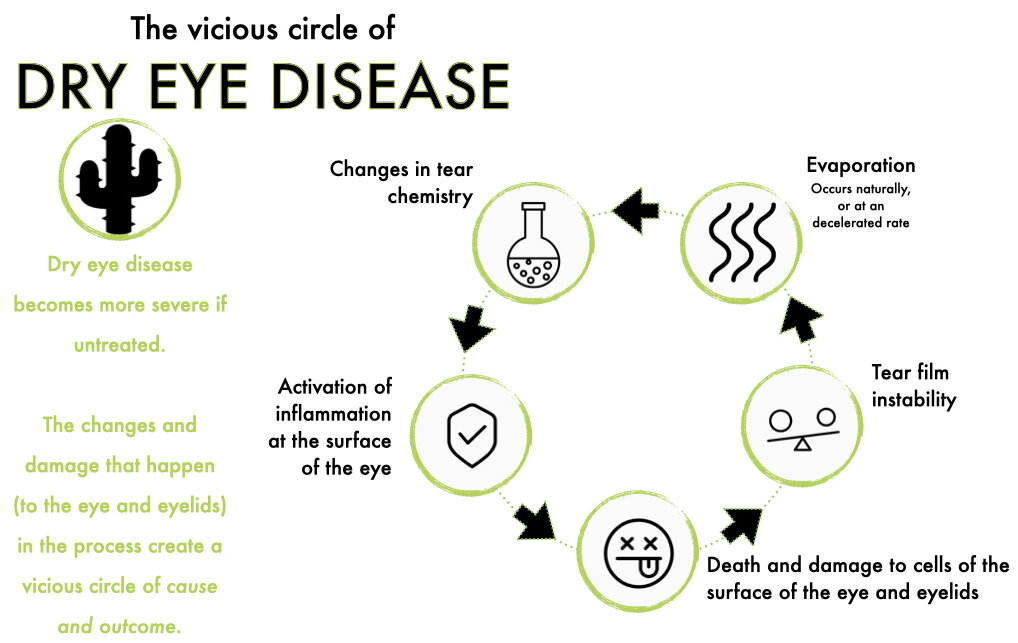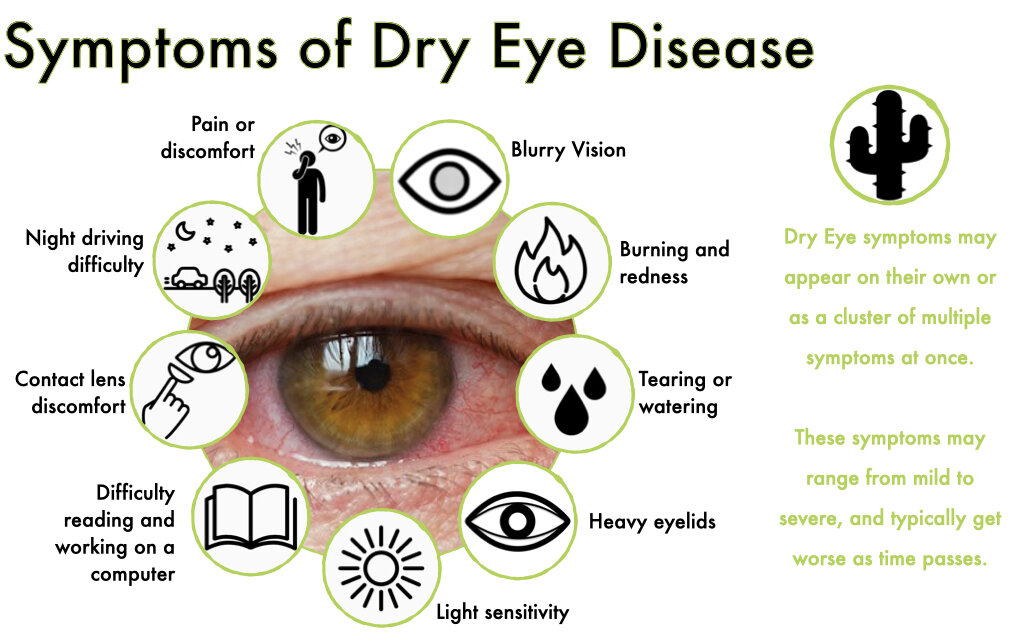Dry Eye Disease is a complex syndrome of multiple underlying causes. It’s no surprise that treatment is has become much more high tech.
The disease effects can also be devastating to quality of life; some cases are so severe that the impact on quality of life is similar to angina and dialysis.
Health conditions, medications, extensive digital device use as well as air conditioning, tear production and rate of evaporations of the tear fluid all affect dry eye disease.
The Visual Eyes dry eye clinic offers comprehensive assessment and management of Dry Eye Disease with the most up-to-date technology on the market.
DRY EYE SYMPTOMS
Red Eyes
Dryness
Grittiness
Scratchiness
Pain or soreness
Irritation
Itching
Burning
Watering
Eye Fatigue
Blurred vision
Light sensitivity
Night driving difficulty
These symptoms may occur on their own, or in clusters where multiple symptoms exist.
Severity and duration also vary and fluctuate.
CLINICAL ASSESSMENT
Microscopic assessment of the eye and specialised imaging techniques are paramount in dry eye diagnosis.
Infrared photography of the glands of the eyelid is of important use in dry eye, since may dry eye patients have dysfunctional or nonfunctional glands.
Using a microscope to assess several components of the eyelids and surface of the eye is also of vital importance. Some symptoms are directly linked to specific structural irregularities of the eye lids and blinking mechanics.
Many dry eye sufferers have symptoms that seem counter-intuitive to dryness, while others have mild physical signs, but severe symptoms.
Careful consideration of dry eye symptoms is the last hurdle in dry eye diagnosis.
COMPLICATING FACTORS
Besides irregularities and dysfunction of the structures that are involved in dry eye, the disease process is complicated by routine, every day life activities and situations.
Medications for health conditions can aggravate dryness, by impacting tear fluid production.
Computer work reduces our blink rate which has a negative impact on the tear stability on the eye.
Air conditioned environments are notoriously less humid and as a result speed up the “drying out” of the tear layer.
These environmental factors should always be taken into consideration when assessing the dry eye.
MANAGEMENT
Dry Eye treatment plans are individualised for each case.
The goal of any treatment plan is to return the tears to a stable state on the eye.
Common treatment options include moisturising tear supplements and specific lid and lash hygiene practices. Other treatment options may include eyedrops to manage allergies, steroids to reduce inflammation, overnight lubricants.
Moderate to severe disease may require moisture goggles, massaging heat packs and other techniques to promote lubrication and tear fluid production.
More intense therapies are also available, with better outcomes and longer lasting effects. Thermo-mechanical ablation of the glands of the eyelid is one such therapy, to promote oil production and improve flow of the oils they produce.





